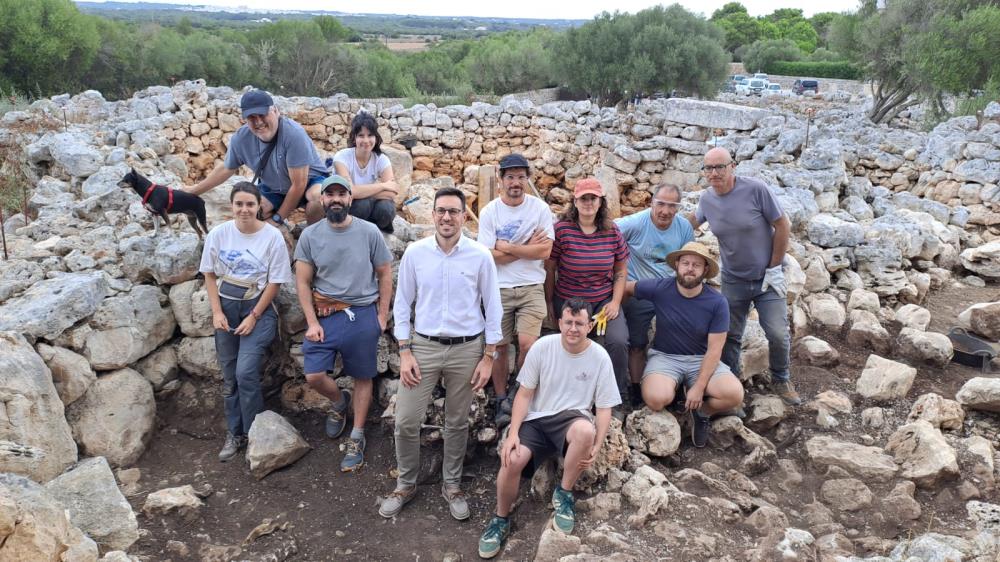
The campaign focused on two main objectives: the study of human remains found inside a dwelling and the investigation of the hearth, the core of prehistoric domestic life.
Since the 1990s, the association Amics del Museu de Menorca has been engaged in research, valorisation, and dissemination of Menorca's history. One of its most prominent projects is the excavation and restoration of protohistoric houses at Torre d’en Galmés. Since 2020, the team of archaeologists and restorers has concentrated on a group of houses located in the northern part of the settlement, between two of the three talayots, which are believed to date back to the earliest phase of occupation of the site.
Currently, the team is excavating one of the domestic structures in the group, known as “Structure 1”. This dwelling retains the typical layout of the late prehistoric circular houses of Menorca but shows some unique features in the orientation of its entrance, the distribution of its interior spaces, and the construction techniques used.
After removing the collapsed stones in previous campaigns, the team is now excavating the occupation layers of the house, which are the richest in material remains from its last inhabitants. During the 2021, 2022, and 2023 campaigns, the remains of six deceased individuals were recovered. Although these human remains are still being studied by a specialised archaeologist, they belong to individuals of different sexes, ages, and postures.
Recent carbon-14 analysis of the samples dated their deaths to between the second half of the 4th century and the 3rd century BCE. Since it is uncommon to find human skeletons within a domestic space, it is possible that the deaths of these individuals under unusual circumstances marked the final occupation of the dwelling.
In addition, it has been discovered that the house is built over a series of silos dug into the rock.
These silos, now covered by the interior walls of the house,
belong to an earlier phase and were part of a storage system connected by channels. During this campaign, one silo has been fully excavated, and work has begun on another, where steps carved into the walls have been documented, allowing access to the bottom. The study of these storage structures—possibly for water—offers insight into how past Menorcans managed this vital resource. Meanwhile, the southern exterior area of the house is also being excavated, where backfill layers have been found, full of fragmented and worn material remains, both indigenous and Punic-Ebusitan. Excavating these spaces also allows researchers to reflect on the impact of domestic units on their immediate surroundings, where household waste was deposited.
The project involved around fifteen technicians, students, and volunteers from Menorca, Mallorca, Catalonia, Madrid, Valencia, and Andalusia. The project is co-directed by archaeologists Borja Corral and Carlos de Salort, along with restorer Francesc Isbert.
All these findings and more will be presented at an open day organised by Amics del Museu de Menorca on Wednesday 30 July at 7:00 PM at the Torre d’en Galmés site itself.
This project is made possible thanks to funding from the Consell Insular de Menorca, the Alaior Town Council, and members of the Amics del Museu de Menorca association. It has the scientific support of Boston University, the Royal Institute for Cultural Heritage of Belgium, the Escola Superior de Conservació i Restauració de Béns Culturals de Catalunya, and the surveying company TANIT SL. Collaborators also include the Maó Town Council, the Fundació Foment del Turisme de Menorca, the Museu de Menorca, INJOVE, Menorca Foto, Menjars Preparats La Paella, and Rótulos Ornaque.